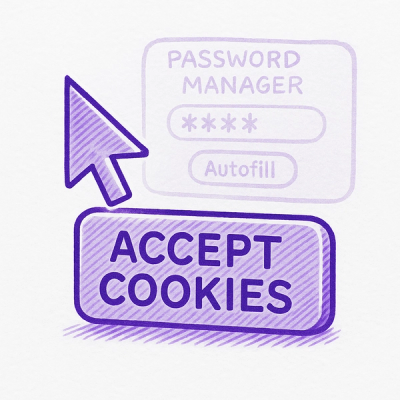
Security News
Researcher Exposes Zero-Day Clickjacking Vulnerabilities in Major Password Managers
Hacker Demonstrates How Easy It Is To Steal Data From Popular Password Managers
on server and local machine:
sudo gem sources -a http://gems.github.com
sudo gem install coderrr-rtunnel
If you don't have root access you can run the above commands without sudo and rubygems will install the gem into your ~/.gem directory. If you go this route, make sure you add the gems executable dir to your path.
export PATH=$PATH:~/.gem/ruby/1.8/bin
on server (myserver.com):
rtunnel_server
on your local machine:
rtunnel_client -c myserver.com -f 4000 -t 3000
This would reverse tunnel myserver.com:4000 to localhost:3000 so that if you had a web server running at port 3000 on your local machine, anyone on the internet could access it by going to http://myserver.com:4000
Logging (verbosity) level
Both the server and the client support 4 levels of logging - 'debug', 'info', 'warn', 'error'. The -l parameter sets the logging level. The default level is 'error'. For example:
rtunnel_server -l debug
starts a server that will output debugging information.
Secure connections
RTunnel can be configured to use ssh keys to control access to the server. A ssh key (generated by ssh-genkey) is required on the client, and the server must have a list of authorized keys (using the format of known_hosts.) The keys are used to authenticate clients and guarantee data integrity. For performance reasons, encryption is not done.
Server setup:
rtunnel_server -a ~/.ssh/known_hosts
Client setup:
rtunnel_client -c myserver.com -f 4000 -t 3000 -k /etc/ssh/ssh_host_rsa_key
If you're concerned about security, you probably want to restrict the range of ports that clients can open up on the rtunnel server.
rtunnel_server -p 3000 -P 3999
restricts clients to using ports 3000-3999 for reverse tunnels.
This client/server allow you to reverse tunnel traffic. Reverse tunneling is useful if you want to run a server behind a NAT and you do not have the ability to use port forwarding. The specific reason I created this program was to reduce the pain of Facebook App development on a crappy internet connection that drops often. ssh -R was not cutting it.
How does reverse tunneling work?
or:
How is this different than normal tunneling?
With tunneling, usually your connections are made in the same direction you create the tunnel connection. With reverse tunneling, you tunnel your connections the opposite direction of which you made the tunnel connection. So you initiate the tunnel with A -> B, but connections are tunneled from B -> A.
Why not just use ssh -R?
The same thing can be achieved with ssh -R, so why not just use it? A lot of ssh servers don't have the GatewayPorts sshd option set up to allow you to reverse tunnel. If you are not in control of the server and it is not setup correctly then you are SOL. RTunnel does not require you are in control of the server. ssh -R also has other annoyances. When your connection drops and you try to re-initiate the reverse tunnel sometimes you get an 'address already in use error' because the old tunnel process is still laying around. This may require you to kill the existing sshd process. RTunnel does not have this problem.
FAQs
Unknown package
We found that costan-rtunnel demonstrated a not healthy version release cadence and project activity because the last version was released a year ago. It has 2 open source maintainers collaborating on the project.
Did you know?

Socket for GitHub automatically highlights issues in each pull request and monitors the health of all your open source dependencies. Discover the contents of your packages and block harmful activity before you install or update your dependencies.

Security News
Hacker Demonstrates How Easy It Is To Steal Data From Popular Password Managers

Security News
Oxlint’s new preview brings type-aware linting powered by typescript-go, combining advanced TypeScript rules with native-speed performance.

Security News
A new site reviews software projects to reveal if they’re truly FOSS, making complex licensing and distribution models easy to understand.